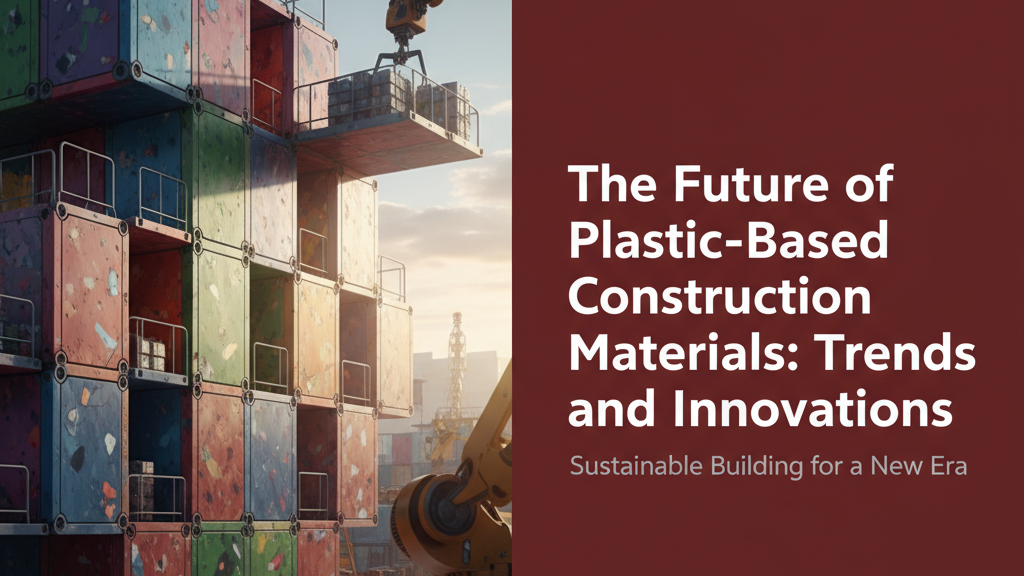Introduction to Plastic-Based Construction Materials
Plastic has quietly revolutionised India’s construction sector, offering solutions that balance durability, cost-efficiency and adaptability. As manufacturers refine polymers for structural applications—from HDPE drainage systems to uPVC window profiles—these materials now compete with traditional options in scenarios where moisture resistance, weight reduction or complex geometries matter.
The Rise of Plastic in Construction
Three factors drive plastic’s adoption in Indian projects:
- Material science advancements: Modern HDPE formulations withstand temperatures from -40°C to 60°C, while multi-chamber uPVC profiles achieve thermal insulation comparable to wooden frames
- Infrastructure demands: Corrosion-proof plastic pipes now dominate 68% of India’s new water supply projects as per CPWD estimates
- Labour efficiency: uPVC windows install 40-50% faster than aluminium systems due to lightweight modular assembly
Advantages of Plastic-Based Materials
Project teams increasingly specify plastics where these properties are required:
| Characteristic | Typical Benefit | Example Application |
|---|---|---|
| Chemical resistance | No rust or scaling in saline/acidic environments | Sewage treatment plant piping |
| Weight reduction | 60-70% lighter than equivalent metal components | High-rise building rainwater systems |
| Design flexibility | Complex extrusions possible without welding joints | uPVC window corner joints |
Sustainability and Environmental Impact
The sustainability equation for construction plastics involves assessing:
- Production: uPVC manufacturing consumes 35% less energy than aluminium smelting per tonne (ISI 13346 benchmarks)
- Lifespan: HDPE pipes last 50+ years versus 15-25 years for GI pipes in aggressive soils
- Recycling: India’s plastic waste rules now mandate 30% recycled content in construction-grade polymers by 2026
A 2023 IIT Delhi study found that plastic-composite wall panels reduced embodied carbon by 19% compared to brick-and-mortar construction in simulated monsoon conditions.
Innovations in Plastic Construction Materials
The sector’s current R&D focus areas include:
- Structural composites: Glass-fibre reinforced plastics for load-bearing columns
- Self-sustaining features: Photovoltaic uPVC window frames undergoing pilot testing in Chennai
- Closed-loop recycling: On-site reprocessing of HDPE scrap into speed bumps and kerbstones
Challenges and Limitations
Adoption barriers still require attention:
- Perception issues: 42% of architects in a Construction World survey still associate plastics with “temporary” structures
- Thermal expansion: uPVC expands 2.2mm per metre at 45°C—designers must account for this in fenestration detailing
- Skill gaps: Improper solvent welding remains the leading cause of early PVC plumbing failures
Case Studies: Successful Applications
1. Modular HDPE drainage, Cochin Smart City: Pre-fabricated stormwater channels reduced installation time by 60% versus concrete.
2. Noise-proof uPVC windows, Mumbai Tower: 47dB sound reduction achieved using triple-glazed units in multi-chamber profiles.
3. Recycled plastic bricks, Pune Township: Compressed EPS waste forms partition walls with 30% better thermal lag than fly ash bricks.
The Future Outlook for Plastic in Construction
Industry projections suggest three trajectories:
- Niche specialisation: Development of site-specific formulations (e.g., UV-stabilised pipes for Rajasthan’s desert climate)
- Digital integration: RFID-tagged components enabling asset tracking across 50-year lifecycles
- Circular systems: Take-back schemes turning decommissioned uPVC windows into underground cable ducts
Conclusion
Plastic’s role in Indian construction is evolving from complementary products to system-critical applications. As material science bridges performance gaps and recycling infrastructure matures, these polymers may redefine how we balance structural integrity with environmental responsibility—provided the industry addresses knowledge gaps in sustainable specification and installation best practices.

